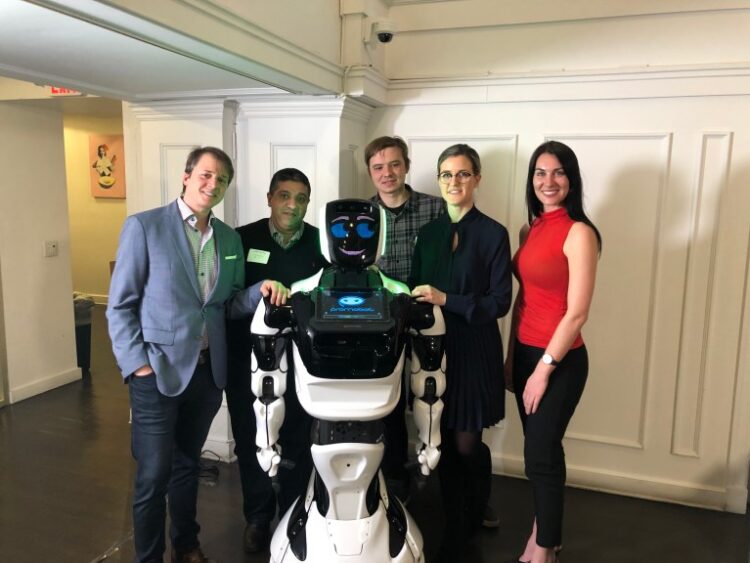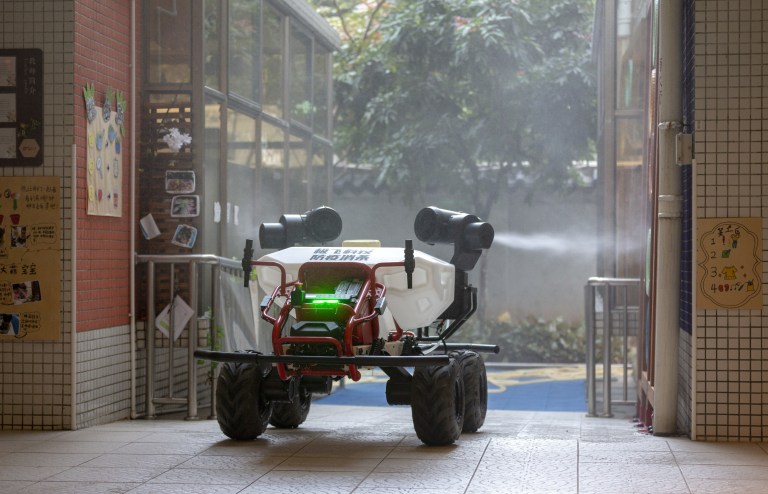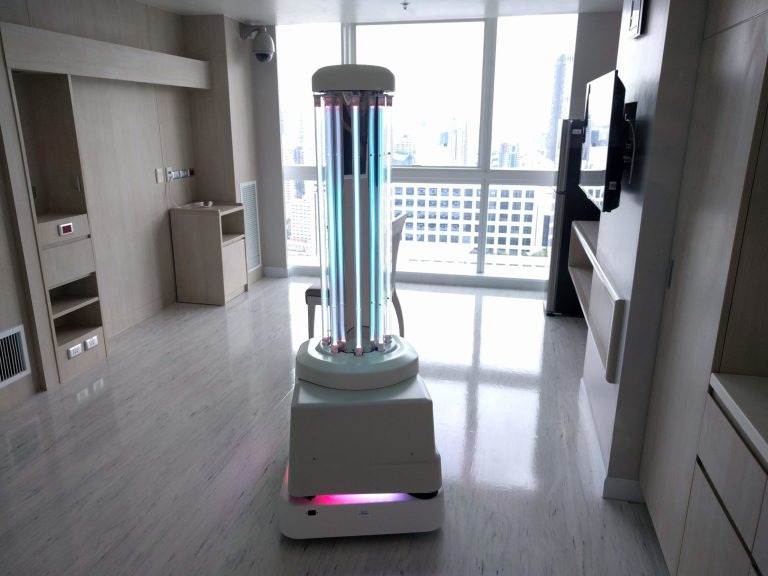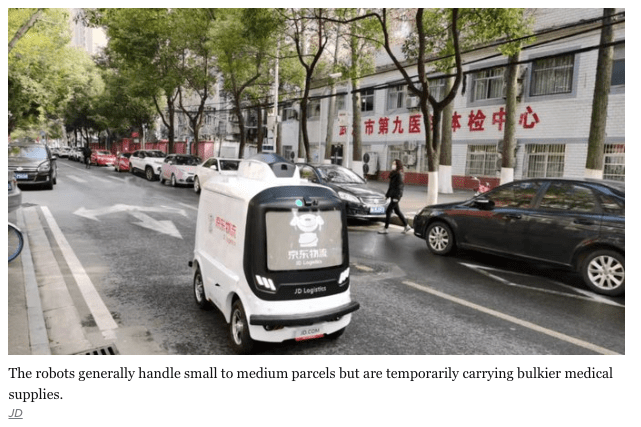Sitting in New York’s former Engineer’s Society, I spoke with Oleg Kivokurtsev of Promobot and discussed his latest service bot creations that are being deployed across the globe in hotels, office buildings, and hospitals. Fay-Louise Hayden of VentureOut (his New York mentor) shared a vignette of her experiences last month as the imposing humanoid diagnosed tourists in Times Square for Coronavirus. My co-panelists at VentureOut, Nikki Greenberg and Mike Rizkalla looked at each other, startled, nervously wondering what the cyborg discovered.
As much as the Coronavirus is a test for humankind’s resilience, it is the first time that intelligent machines are being utilized in large numbers to fight against a pandemic. Just this week, the Shanxi province in China engaged a force of unmanned rovers to sterilize apartment blocks with known cases. The disinfection machines boast of safely spraying 12 acres per hour. As Hou Yongfei, the deputy director of Shanxi Provincial Drone Association, told a local newspaper, “Now any residential complex with confirmed cases will be disinfected [by robots] twice a day.” The converted agricultural pesticide rovers are being heralded as lifesaving, Yongfei describes, “Our residential complex is densely populated and covers an area of 2.5 acres. Yesterday, two tanks came to our complex and went into all buildings, corridors, and courtyards for disinfection. The result was good and it was very convenient.” Officials in other regions, such as Jilin, Shandong, and Zhejiang have followed suit, and even expanded missions to include aerial drones.
Three days ago, XAG – one of the largest Chinese manufacturers of automated farming equipment, including drones and robots – announced it has set up a special fund for “epidemic containment” using its XPlanet drones and R80 robots in affected areas. The press release also stated that “a total of 370 professional teams with over 2,600 XAG agricultural drones have voluntarily joined the disinfection operation, covering an area of 902 million square meters in China’s 20 provinces.” The statement further promoted “one XAG drone in a day can disinfect 600,000-700,000 square meters, a task would normally take 100 workers to complete. Also, with the ability to precisely control output, it consumes one fifth less disinfectant than traditional approach such as handheld spraying.” In areas that the drone is unable to reach, XAG will employ its terrestrial R80 rover that integrates a “360° high-speed intelligent JetSprayer” that is able to “traverse narrow spaces, automatically avoid obstacles and disinfect targeted areas from different angles, without dead ends.” Many activists have complained that such technology is also being manipulated by government officials to spy on public and enforce military-imposed quarantines. Vox reported last month, “Chinese officials have used drones to track whether people are traveling outside without wearing face masks or violating other quarantine rules.”
Clamoring to contain the virus has led to a boost in global robot technology sales as explained by Nina Deka of publicly-traded robotics fund, ROBO Global, “Covid-19 is impacting the available supply of physicians in Wuhan. Telemedicine enables a doctor to visit over the internet, enabling a patient to see a doctor in a different city.” Her colleague Jeremie Capron added, “This is a $5Bn+ market growth in excess of 20% per year. But we see other robotics application developing in hospitals: service robots from Siasun Robotics are used to triage patients as they come into healthcare facilities. Autonomous mobile robots such as those made by Aethon are used in hospitals to deliver food, linens, medical equipment, etc. Robotics is also used for pharmacy automation, led by companies like Omnicell.” Just this week, The Robot Report cited that Danish UVD Robots ApS forged a reseller agreement with Sunay Healthcare Supply to distribute its proprietary ultraviolet interior sterilizing robots to the Chinese republic. Su Yan, CEO of Sunay, exclaimed, “With this agreement, more than 2,000 hospitals will now have the opportunity to ensure effective disinfection, protecting both their patients and staff.”
Even e-commerce logistics giant JD.com has volunteered its mechanical workforce in the battle against Coronavirus. In the past two months, the Chinese retailer has not only taken proactive measures to protect tens of thousands of its employees, but it has also aided the government to streamline communications and delivery of goods across the nation. For example, “From January 19-22, JD supplied over 126 million masks, 310,000 bottles of disinfectants and 1 million bottles of liquid soap to customers.” Over the next few weeks, the company continued to donate an additional 100 million masks and 60,000 other items to charity and medical institutions across the nation. It has also converted its Cloud operations platform into a proactive, “Epidemic Population Analysis System” that “uses big data and artificial intelligence to judge the divisions of high-risk groups for infection.” To complement this effort, it has launched fleets of delivery drones and robots to ferry vital medical supplies and other critical materials to quarantined patients, hospitals, and infected municipalities. Not to be outdone, JD.com’s competitor, Alibaba is turning its business-to-business sourcing platform into a donation network for hospitals and local authorities. In an open letter to its merchants, the online site affirmed, “No matter where your goods are, we will deliver them to frontline medical personnel in the fastest and safest ways.”







